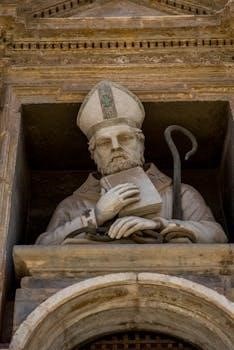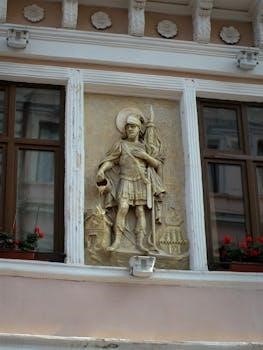The Book of Many Things for 5e is a comprehensive guide exploring the infamous Deck of Many Things, a powerful artifact found in Dungeons & Dragons. This book provides a history, and guidelines for using it.
Overview of the Book of Many Things
This book delves into the legendary Deck of Many Things, offering a deep dive into its history within D&D across various editions. It explores the deck’s evolution from simple mechanical effects to a tarot-inspired artifact with significant consequences. The book provides Dungeon Masters with tools to tailor the deck to their campaigns, ensuring its integration is both impactful and enjoyable. It also includes new character options, magic items, spells, and monsters, all thematically linked to the deck’s chaotic nature. Furthermore, it offers practical guidance on incorporating the deck into gameplay, addressing potential risks and providing advice on mitigating them. The book also comes in physical and digital formats.

History and Evolution of the Deck
The Deck of Many Things has a rich history, evolving from simple mechanical effects in 1975 to a complex, tarot-inspired artifact with varied effects across D&D editions.
Early Iterations of the Deck (1975-1979)
The Deck of Many Things made its debut in 1975 within the Greyhawk supplement, marking its initial presence in D&D. This early version consisted of 18 cards, each possessing mechanical effects, but lacking individual names. It was designed using face cards, aces, and jokers from a standard deck of playing cards. This iteration established the core concept of the deck as a physical object players could interact with. This initial form was a basic, yet impactful element, setting the foundation for the deck’s future development. The absence of names for the cards contributed to the mysterious nature of this early iteration, emphasizing the unpredictability associated with drawing a card.
Expansion and Tarot Inspiration (1979 DMG)
The 1979 Dungeon Master’s Guide marked a significant expansion of the Deck of Many Things, establishing its more recognizable form. The deck grew to 22 cards, with each card receiving a unique name. This expansion drew inspiration from the tarot, specifically the 22 cards of the Major Arcana. This transition also introduced the idea of multiple versions of the deck, with a less powerful 13-card variant. This edition moved the deck beyond simple playing cards, solidifying its identity as a magical artifact rooted in the symbolism of the tarot. The introduction of names for each card added a layer of narrative richness and thematic depth, further enhancing the mystery and danger associated with the deck.
The Tarot Deck of Many Things (1983)
In 1983, Dragon magazine issue 77 introduced a unique variation called the Tarot Deck of Many Things. This version reimagined the deck as a powerful artifact created by a god of fate. Unlike previous iterations, this deck consisted of 78 cards, mirroring a full tarot deck. It could be used for divination, offering insights into the future, as well as having unique effects when drawn. Each of the seventy-eight cards had a distinct magical effect, expanding the potential for chaos and adventure. This version established the deck as more than just a magical item, but also a tool for fate itself. The Tarot Deck of Many Things added to the deck’s mystique and possibilities.
Further Development (1989)
The Deck of Many Things saw further expansion in 1989, explored in Dragon Magazine issue 148. This article featured a conversation that delved into the deck’s origins. It suggested that multiple decks were created by gods of luck from the Outlands to test the greed of adventurers. Leprechauns, custodians of fortune, were said to distribute the cards. This expansion, while unofficial, offered insight into the deck’s purpose and creation. This issue also included the first physical replica of the deck, with artwork by George Barr. The card backs were designed with two dragons, representing the deck’s balance of positive and negative effects.

The Deck in Different Editions
The Deck of Many Things has evolved through various D&D editions. Each edition has presented the deck with unique rules and lore, impacting gameplay and its overall role.
The Deck in 3rd Edition
In the 3rd edition of D&D, the Deck of Many Things retained its core mechanics and card names from previous editions. A significant change was its formal designation as a minor artifact, establishing it as a unique magical item beyond player creation. This edition also offered guidance on constructing a Deck of Many Things using readily available tarot cards, making it more accessible. This was in addition to using standard playing cards. The mechanical effects of the cards remained largely consistent, but its artifact status reinforced its powerful and unpredictable nature within the game. This edition aimed to bridge the gap between the deck’s history and its practical use.
The Deck in 4th Edition
The 4th edition of D&D introduced two distinct versions of the Deck of Many Things. One version was designed for higher-level heroes, emphasizing its artifact status. This version included the concept that the deck had its own intentions, seeking to create chaos and disrupt established power structures. Characters aligning with these chaotic goals were rewarded, while those opposing it faced harsher consequences. This added a new layer of interaction, moving beyond simple card draws. The second version appeared in the ‘Madness at Gardmore Abbey’ adventure with a focus on card collection and unique powers. It also introduced a random element, inspired by Ravenloft’s tarokka cards, where the deck influenced the adventure’s plot and patron.
Content and Features
The book includes new monsters, character options, magic items, and spells. These additions enhance the game with unique elements linked to the Deck of Many Things.
New Monsters and Alternatives
The Book of Many Things introduces a variety of new monsters, enriching the bestiary for Dungeon Masters. While many creatures are drawn from the Monster Manual, this book expands the selection with unique challenges tied to the themes of fate and chance. Furthermore, some monsters include alternatives from Mordenkainen Presents⁚ Monsters of the Multiverse, offering DMs options to tailor encounters to their preferences. This provides flexibility, allowing a more diverse range of creatures and challenges that fit various campaign settings. The new monsters and alternatives are designed to enhance the gameplay experience by offering new and exciting encounters.
Character Options, Magic Items, and Spells
This section of The Book of Many Things provides a wealth of new character options, magic items, and spells. Players can explore unique backgrounds and feats tied to the themes of fate and fortune, allowing for fresh and exciting character builds. Furthermore, there is a collection of new magic items, each with its own unique properties and ties to the deck’s chaotic nature. The book also introduces new spells that are thematically linked to the Deck of Many Things, such as spells that alter fate or manipulate luck. These options serve to deepen player engagement and creativity in character creation.

Using the Deck in Campaigns
This section details how to incorporate the Deck of Many Things into your 5e campaigns. Learn to tailor it for different levels and playstyles, also exploring different themes.
Tailoring the Deck to Your Game
The Book of Many Things emphasizes adapting the deck to your specific campaign needs. It encourages DMs to modify the deck’s effects, ensuring they align with the game’s tone and player preferences. You can stack the deck for specific outcomes, such as more roleplaying prompts over mechanical changes, or create a deck with only beneficial or detrimental effects. This customization helps maintain the deck’s wonder while preventing it from becoming a game-breaker. By tailoring the deck, you can shape it to fit your needs and the tastes of your players, without losing its unique nature as a physical object that players can interact with.
Chapter Themes in the Book
The Book of Many Things is structured around several key themes, guiding DMs and players through its contents. It includes chapters focused on Dungeon Master options, providing tools and guidance for using the Deck effectively. Additionally, there are chapters dedicated to character creation options, offering new choices for players. The book also explores astrology-themed options, introducing elements related to the celestial. Furthermore, it features adventure locations, providing ready-to-use settings for campaigns. Lastly, it presents adversaries and rivals, offering new challenges for players to overcome. These thematic chapters aim to create a complete experience for those using the Deck of Many Things in their D&D games.

Practical Aspects
The book is available in both physical and digital formats, offering accessibility to all players. It includes disclaimers about the risks associated with the Deck of Many Things.
Physical and Digital Formats
The Book of Many Things is offered in both physical and digital versions, catering to diverse player preferences. The physical edition provides a tangible experience, allowing players to handle the book and any accompanying cards. The digital format is typically available as a PDF, offering convenient access on various devices. Combining both formats is often an option to get the digital version at a discounted price. This dual approach ensures players can engage with the content in the way that best suits their gaming style, whether at the table or on the go. Both formats contain the same core information, allowing for a seamless transition between them.
The Book of Many Things comes with a significant disclaimer, acknowledging the chaotic and unpredictable nature of the Deck. The text explicitly states that the gods of fate hold no responsibility for any negative consequences resulting from using the deck. These risks include, but are not limited to, alignment shifts, character deaths, debilitating curses, fiendish enemies, imprisonments, and betrayals. Players should also be aware of potential losses of ability scores, experience points, magic items, physical property, or wealth. The disclaimer serves as a warning, emphasizing the potential for dramatic and often irreversible impacts, highlighting the inherent gamble involved in drawing cards from the Deck. It encourages players to approach the Deck with caution.




Leave a Reply
You must be logged in to post a comment.